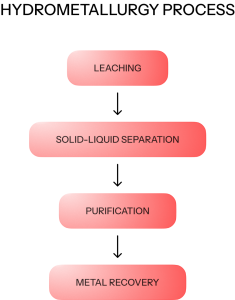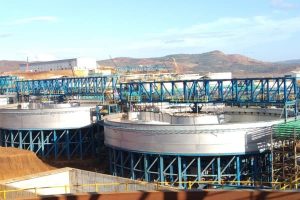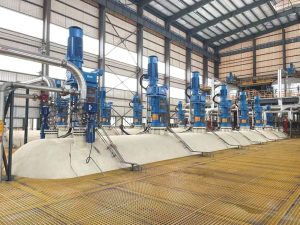Maximize Metal Recovery: A Practical Guide to Efficient Hydrometallurgy
What is Hydrometallurgy and Why is it Important?
Hydrometallurgy extracts metals from ores and concentrates through aqueous solutions. Compared with pyrometallurgy, hydrometallurgy has the advantages of low energy consumption, less pollution, and high resource recycling rate. The process is simple and easy to automate. It is environmentally friendly and in line with the trend of green development. You can find many hydrometallurgy examples in the new energy industry. High-purity metals such as lithium, cobalt, and nickel rely on hydrometallurgical technology. These are the core raw materials of lithium batteries and energy storage systems.
In modern hydrometallurgical plants, operators are constantly striving to boost metal recovery rates while keeping a close eye on operational costs, energy use, and environmental compliance. From ore leaching to purification, every stage must strike a delicate balance between efficiency and safety. In this context, selecting the right thickener and agitator becomes critical—these core components directly affect process stability, energy consumption, and material loss.
Analyze the Core Stages and Process Requirements of Hydrometallurgy
The Hydrometallurgy process mainly consists of three core stages: leaching, solution concentration and purification, and metal recovery.
Leaching stage: Metals are dissolved from ores by acid, alkali, cyanide or biological leaching. Common methods include heap leaching, vat leaching and in-situ leaching. Uniform pulp distribution and effective mixing are critical for maximizing the contact between the leaching agent and the ore—both of which directly impact leaching efficiency and reaction speed. Without proper agitation, dead zones can form within the tank, leading to incomplete reactions, lower metal recovery rates, and wasted reagents. That’s why corrosion-resistant, high-performance stirring equipment is essential in any hydrometallurgical setup.
Solution concentration and purification stage: Solvent extraction (SX), ion exchange, and precipitation methods are adopted to remove impurities and increase the concentration of metal ions. It is necessary to precisely control the flow rate, stir evenly and moderately, and complete the separation operation efficiently.
Metal recovery stage: Metals are recovered through electrolytic deposition, precipitation and cementation methods. Before these methods, unimpeded solution flow and effective solid-liquid separation are essential for maximizing metal recovery and ensuring high product purity. Poor thickener performance can lead to turbid solutions, increased metal loss, and downstream issues such as inefficient electrolysis and contaminated final products. For hydrometallurgical operations, a reliable thickening system is not just beneficial—it’s critical to process success.
Key Equipment Selection Points in Hydrometallurgical Extraction
To avoid these risks and ensure optimal process performance, careful attention must be given to equipment selection. The choice of thickeners and agitators directly influences efficiency, operational cost, and system stability. The following key factors should be considered:
1. Clear project requirements:
Ore type: select leaching process and equipment according to chemical composition and particle size.
Processing capacity: match daily/hourly processing volume to avoid insufficient or excessive capacity.
Leaching agent: select corrosion-resistant equipment, suitable for sulfuric acid, cyanide, etc.
Residue treatment: select solid-liquid separation equipment according to residue characteristics and environmental protection requirements.
2. Select the type of thickener and agitator:
Thickener:
Deep cone thickener: suitable for high-concentration, high-viscosity slurry, small footprint, high efficiency, commonly used in gold and copper extraction.
High-speed thickener: suitable for rapid separation of large-volume, low-concentration materials.
The selection should consider the slurry properties, sedimentation rate and tailings standards.
Agitator:
Side-entry type is suitable for large tanks and easy maintenance; top-mounted type is suitable for small tanks and uniform mixing.
Single impeller is suitable for low viscosity, and dual impeller or specialized designs are suitable for high-concentration and complex fluids.
Optimize the selection according to the tank size and slurry viscosity.
3. Material and corrosion resistance:
In hydrometallurgical operations, equipment is frequently exposed to highly acidic environments, making material selection critical. To balance corrosion resistance and structural strength, rubber linings or steel-polymer coatings are commonly recommended for standard conditions. However, in more extreme chemical settings, titanium alloys or high-nickel alloys offer superior durability. Regardless of the chosen material, regular inspection of protective coatings is essential to prevent localized corrosion. If left unchecked, material failure can lead to unplanned downtime, costly equipment replacements, and serious disruptions to the production process.
4. Automation compatibility:
Integration with plant control systems (PLC/DCS) is now a necessity for modern, efficient operations. Equipment must be capable of supporting automation features such as real-time monitoring of pH, flow rate, and viscosity. Compatibility with remote monitoring and data analysis platforms further enhances process visibility and control, ultimately contributing to greater operational stability and reduced human error.
Installation and Maintenance Essentials for Hydrometallurgy Equipment
Installation precautions:
- Evaluate the site (load bearing, corrosion exposure).
- Installed by professionals.
- Reasonably arrange pipelines and slurry flow channels.
- Ensure the agitator is grounded to prevent static electricity.
- Set up clear warning signs.
Maintenance best practices:
- Prevent slurry overload or excessive torque on the agitator shaft.
- Calibrate equipment regularly (especially automated systems).
- Clean the thickener sedimentation area to prevent clogging.
The NHD Advantage in Hydrometallurgy
NHD’s agitators and high-efficiency thickeners are specially engineered for pretreatment, leaching, and solid-liquid separation in hydrometallurgy, widely applied in copper, nickel, cobalt, and other non-ferrous metal recovery.
NHD agitators feature CFD/CFM-optimized fluid dynamics for superior mixing efficiency in hydrometallurgical applications. The patented no-downtime seal replacement system ensures continuous operation. Custom-engineered shafts and impellers with advanced linings withstand harsh corrosive and abrasive conditions while delivering powerful mixing action.
NHD thickeners provide customized solutions through settling tests and rheology analysis, featuring multi-drive configurations, smart automation, and anti-jamming rakes for reliable operation. Their low-leakage mechanical design and proven performance in phosphate, alumina, and non-ferrous applications ensure versatile processing capabilities.
Building on these advanced thickening and mixing technology, NHD’s integrated solutions help operations achieve improved metal recovery, enhanced process efficiency, and reduced maintenance requirements, supporting more sustainable and stable production outcomes.
Conclusion
Hydrometallurgy relies on high-efficiency agitators and thickeners to achieve metal dissolution, purification and recovery. NHD has been deeply engaged in the equipment field, such as chemical mixing tank with agitator, providing customized thickener and agitator solutions. We precisely match the characteristics of the ore, processing scale and process requirements. We offer full support from design to operation and maintenance, helping projects reduce costs and increase efficiency. Reach our experts at [email protected].




